Introduction
Alcohol-induced blackouts can provoke concern for individuals who experience them and those around them. Distinguishing between occasional drinking mishaps and signs of a deeper problem can be challenging. This article explores the nature of blackouts, their implications for alcohol use disorders, and the dangers they pose, while providing insights into responsible consumption habits.
The Mechanics of Alcohol-Induced Blackouts
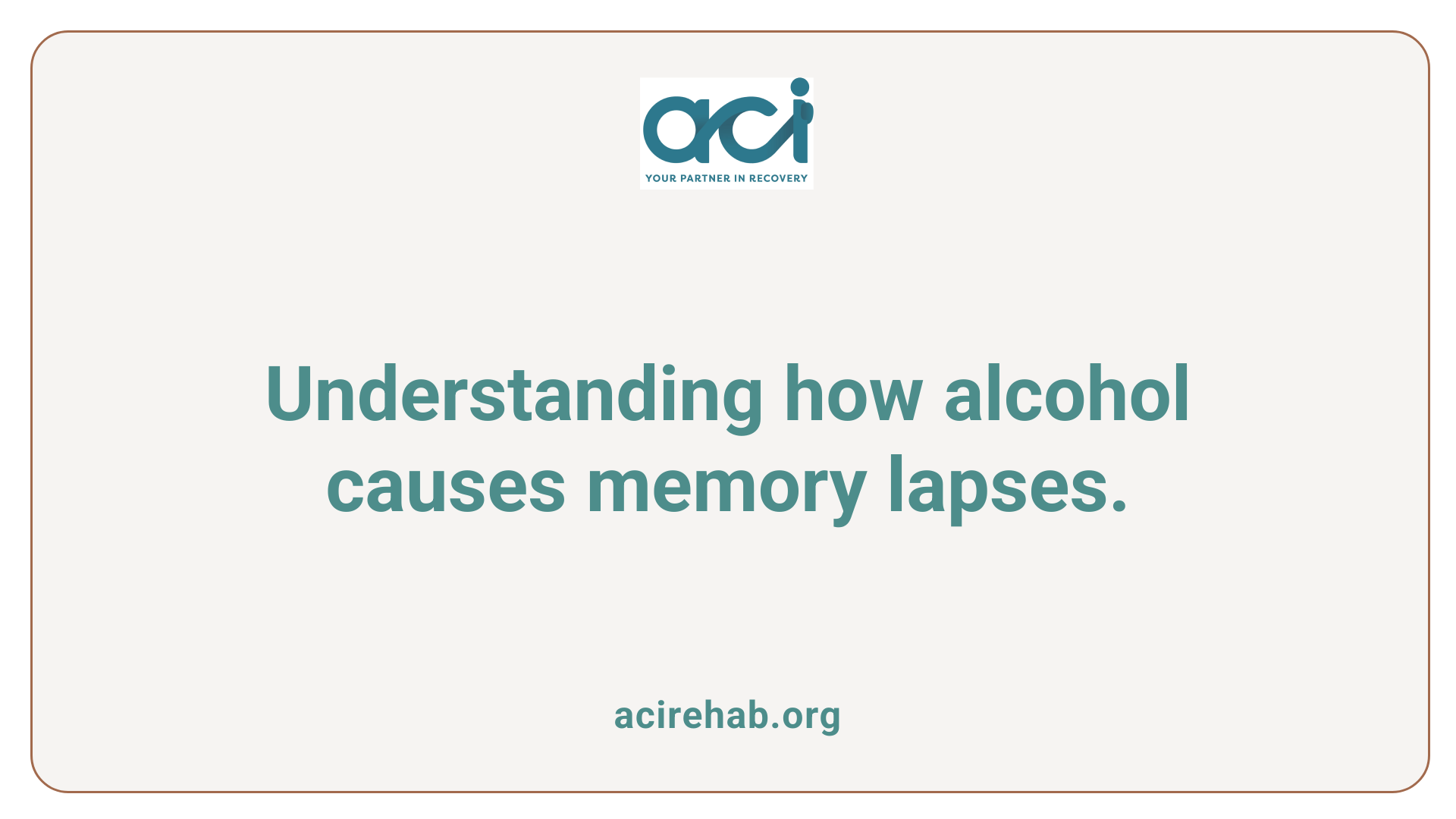
How do blackouts occur?
Alcohol-induced blackouts happen when excessive alcohol consumption leads to memory gaps due to impaired brain function. Specifically, the hippocampus, which is critical for forming new long-term memories, is unable to process information when blood alcohol concentration (BAC) levels rise rapidly. Research indicates that blackouts typically occur at BAC levels around 0.16% and are exacerbated by rapid drinking habits, such as binge drinking and consuming alcohol on an empty stomach.
During a blackout, individuals remain conscious and may engage in various activities, but they will not recall these events later. Notably, the primary cause of blackouts is the speed of alcohol intake rather than the total amount consumed.
Types of blackouts
There are two main types of alcohol blackouts:
- Fragmentary Blackouts: Partial memory loss occurs, where some events can be recalled with cues or prompts.
- En Bloc Blackouts: Complete amnesia for events experienced while intoxicated, with no ability to recover those memories.
What are the signs and symptoms of being blackout drunk?
Blackout drunk individuals experience significant memory gaps due to excessive alcohol consumption, which can happen even at lower levels of drinking. Signs and symptoms include dizziness, headaches, difficulty speaking, potential vision changes, and impaired motor functions. During a blackout, a person may engage in complex activities but will have no recollection of them later. Women are at greater risk of blacking out due to physiological differences that cause faster absorption of alcohol.
Blackouts and Alcohol Use Disorders
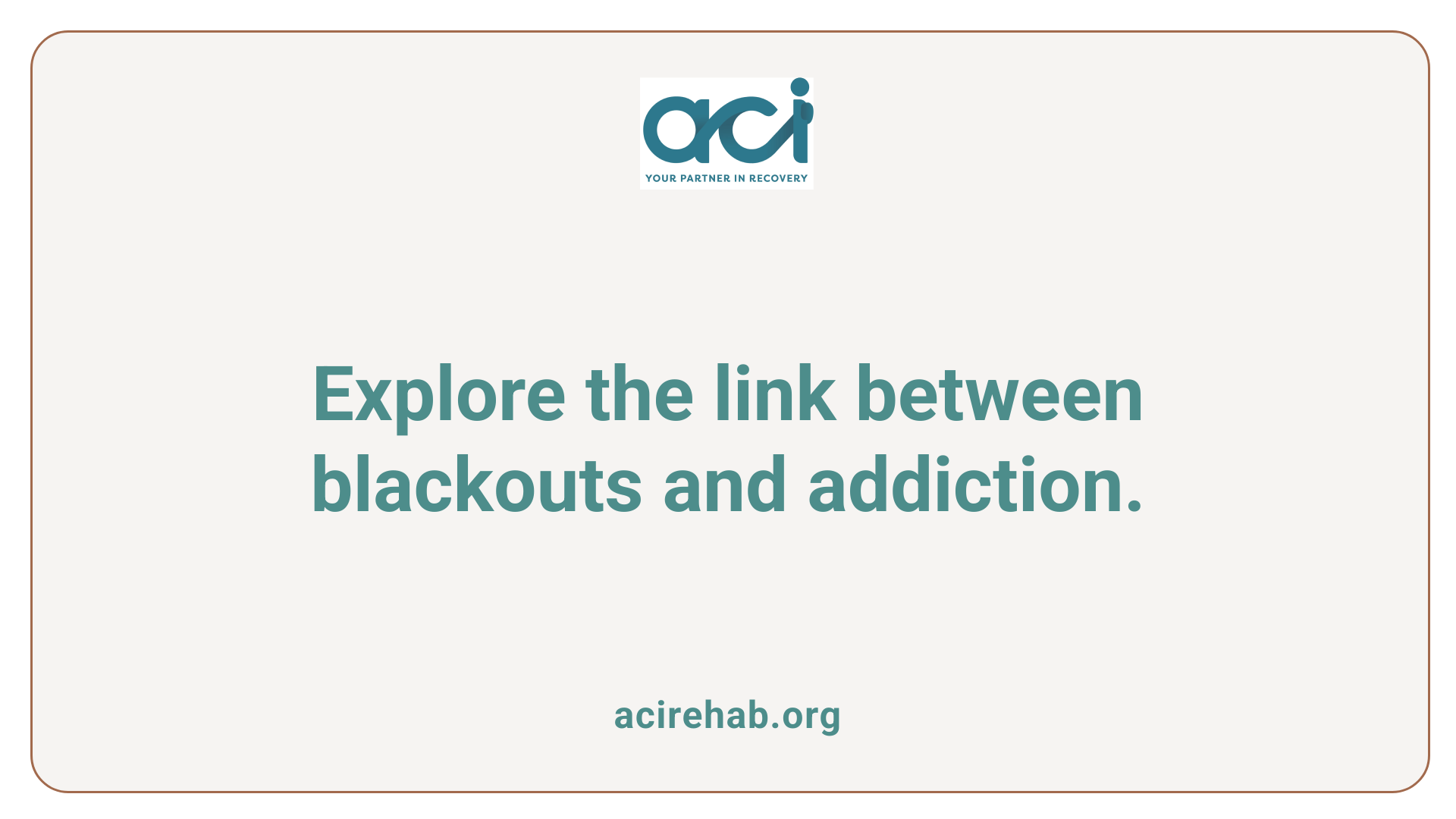
How do blackouts relate to potential alcohol use disorders?
Blackouts can serve as a significant warning sign of heavy drinking behaviors, which often suggest the presence of an alcohol use disorder (AUD). These blackouts occur when memory formation is disrupted due to high blood alcohol concentration (BAC), typically around 0.15% to 0.16% or higher.
When someone experiences a blackout, it often correlates with binge drinking—consuming large amounts of alcohol quickly. This behavior can lead to an inability to control drinking, cravings, and withdrawal symptoms.
Frequent blackouts not only indicate risky drinking patterns but can also pose a heightened risk for long-term health issues, including cognitive impairment and alcohol dependence. Individuals with a family history of alcohol problems or those who begin drinking at an early age may have an increased susceptibility to developing AUD, emphasizing the importance of recognizing the implications of blackout experiences.
Potential warning signs
People should be vigilant of the following warning signs that might indicate an emerging alcohol problem:
- Frequent blackouts or memory lapses during drinking
- Inability to limit alcohol intake or feeling compelled to drink
- Increased tolerance leading to higher alcohol consumption
- Symptoms of withdrawal, such as shaking or sweating when not drinking
- Neglecting responsibilities or relationships due to alcohol use
Awareness of these signs plays a crucial role in self-assessment, ensuring individuals can seek help if necessary.
Assessing the Health Risks of Blackout Drinking
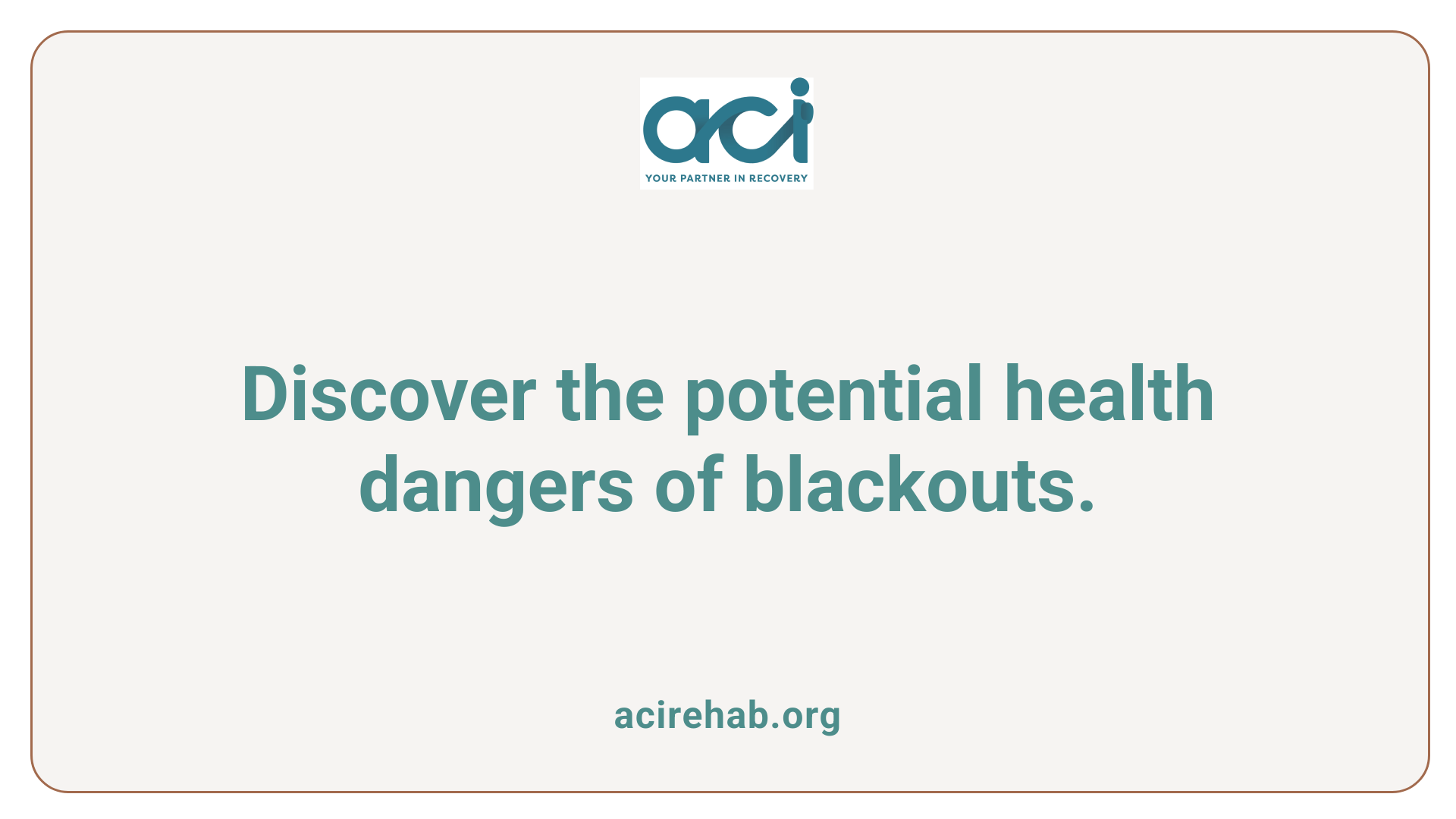
What are the risks and dangers associated with blackout drinking?
Blackout drinking poses significant health risks that can have lasting consequences. One of the primary dangers is alcohol poisoning, which can occur when blood alcohol concentrations (BAC) rise rapidly—often reaching levels around 0.16% or higher. With blackouts, individuals may engage in risky behaviors without being able to recall their actions later, such as driving under the influence or partaking in unsafe sexual practices.
The two types of blackouts—fragmentary and en bloc—reflect the different degrees of memory loss. Fragmentary blackouts allow for partial recall with cues, while en bloc blackouts result in complete memory loss for events during intoxication.
Furthermore, certain populations, such as young women, are particularly vulnerable. Studies indicate that women may experience health risks like liver diseases and cardiovascular issues more swiftly due to physiological factors, including body composition and metabolism.
Experiencing a blackout, even once, can serve as a red flag, prompting individuals to evaluate their relationship with alcohol and consider seeking help if drinking behaviors show signs of escalating.
The Physiology of Alcohol and Memory
Impact of alcohol on the brain
Alcohol consumption can lead to significant changes in brain functionality, particularly impacting memory formation. This impairment is especially pronounced when high levels of alcohol are consumed rapidly, often resulting in temporary amnesic episodes known as blackouts.
When blood alcohol concentrations (BAC) reach about 0.16% or higher, alcohol specifically disrupts the hippocampus’s ability to transfer short-term memories into long-term storage. This disruption forms the basis for alcohol-induced blackouts, where individuals remain conscious but cannot recall their actions during intoxication.
Hippocampus function
The hippocampus plays a crucial role in memory retention and retrieval. Under the influence of alcohol, the area becomes significantly affected; it struggles to encode new memories efficiently. Studies indicate a strong relationship between high levels of intoxication and memory lapses, leading to both fragmentary and en bloc blackouts—where memory loss is partial or complete, respectively.
Understanding this relationship helps underline the risks associated with heavy drinking. Those engaging in binge drinking or consuming alcohol on an empty stomach face elevated risks, making it essential to assess drinking habits for healthier choices.
Recognizing and Addressing Alcohol-Related Brain Damage
What are the symptoms of alcohol-related brain damage?
Symptoms of alcohol-related brain damage (ARBI) manifest differently depending on the brain regions affected. Common signs include:
- Ataxia: Impaired motor coordination and balance, making physical tasks challenging.
- Confusion: Difficulty in processing thoughts which can lead to misunderstandings and memory gaps.
- Vision problems: Visual disturbances that interfere with daily functioning.
- Memory issues: Notable in conditions like Korsakoff’s amnesic syndrome, where individuals struggle to recall past memories or form new ones.
- Cognitive impairments: These can hinder learning and decision-making abilities, critical for everyday activities.
- Behavioral changes: People may exhibit increased aggression or confusion, requiring caregiver support.
Long-term consequences of blackouts
The long-term effects of frequent blackouts include persistent cognitive and memory issues resulting from damage to the frontal lobe. Chronic alcohol consumption significantly heightens risks such as:
- Alcohol use disorders: Individuals experiencing regular blackouts are more likely to develop dependencies.
- Impaired judgment and decision-making: These impairments can lead to risky behaviors, increasing the likelihood of accidents or legal trouble.
- Emotional distress and relationship issues: Blackouts can cause strains in personal relationships, negatively impacting social interactions.
Awareness of these symptoms and consequences is essential for self-evaluation and seeking help if needed.
| Symptoms of ARBI | Long-term Consequences |
|---|---|
| Ataxia | Impaired judgment |
| Confusion | Increased risk of disorders |
| Vision problems | Emotional distress |
| Memory issues | Relationship issues |
| Cognitive impairments | Long-term cognitive decline |
Preventive Measures and Safer Drinking Practices
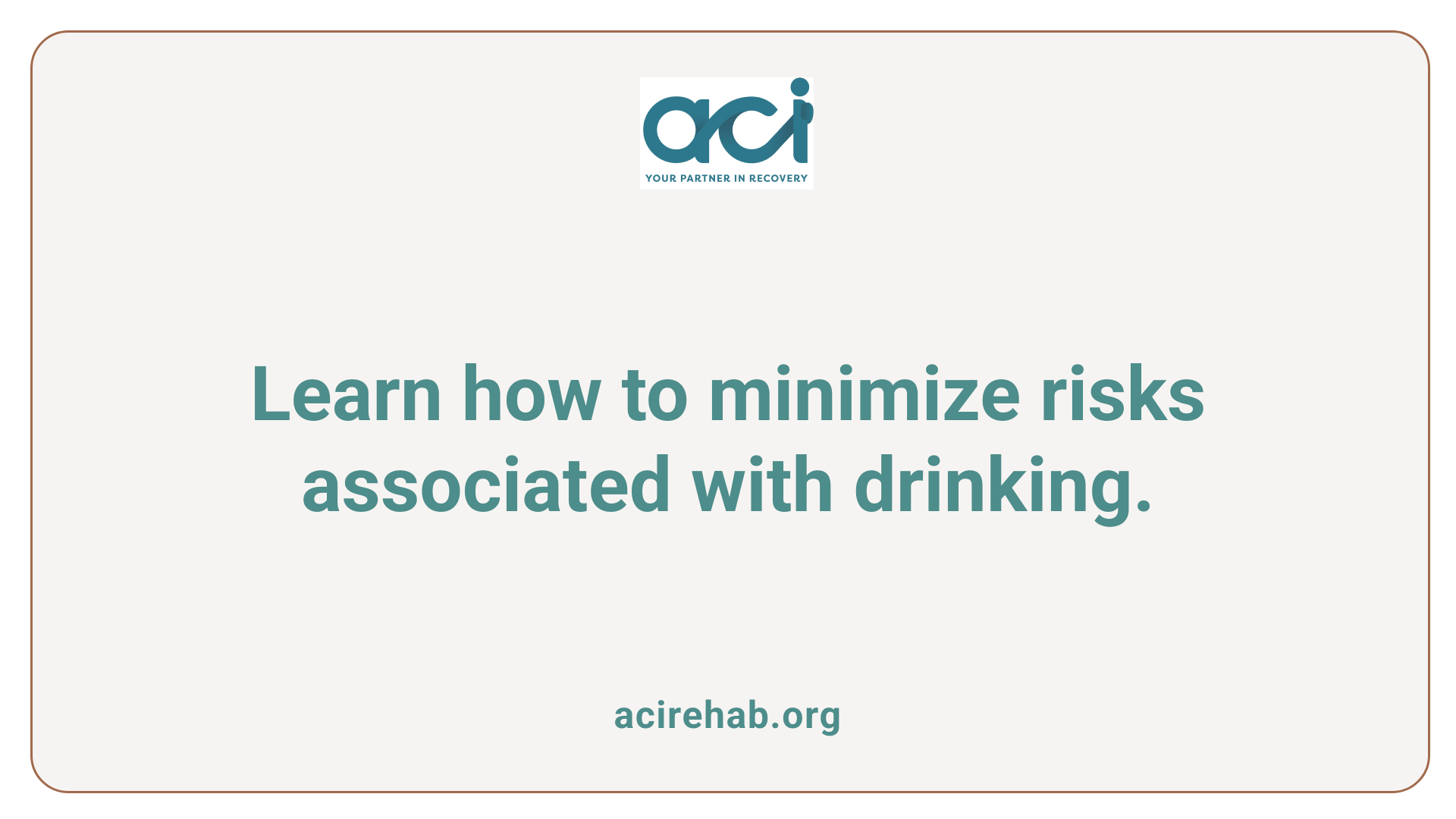
Guidelines to Reduce Blackout Risk
To mitigate the chances of experiencing alcohol-induced blackouts, consider the following strategies:
- Pace Your Drinking: Spread out your alcohol consumption over the course of several hours.
- Eat Before Drinking: Consuming food prior to alcohol intake slows absorption and can moderate blood alcohol levels.
- Know Your Limits: Be aware of your own tolerance and strive to drink within safe limits.
- Avoid Binge Drinking: Steer clear of situations that encourage excessive drinking in a short time.
- Stay Hydrated: Alternating alcoholic beverages with water can help keep BAC in check.
Factors Affecting Blackout Likelihood
Several factors can increase your risk of experiencing blackouts, including:
- Rate of Consumption: Rapid drinking leads to quicker spikes in BAC.
- Empty Stomach: Drinking without eating reduces the body’s ability to process alcohol.
- Co-consumption of Substances: Mixing alcohol with drugs or other depressants can exacerbate memory impairment.
- Individual Variability: Factors like body weight, gender, and genetic predisposition play significant roles in how your body metabolizes alcohol.
By following these guidelines and understanding the influencing factors, individuals can reduce the likelihood of experiencing dangerous and memory-altering blackouts.
Reflection and Professional Insight: Evaluating Drinking Habits
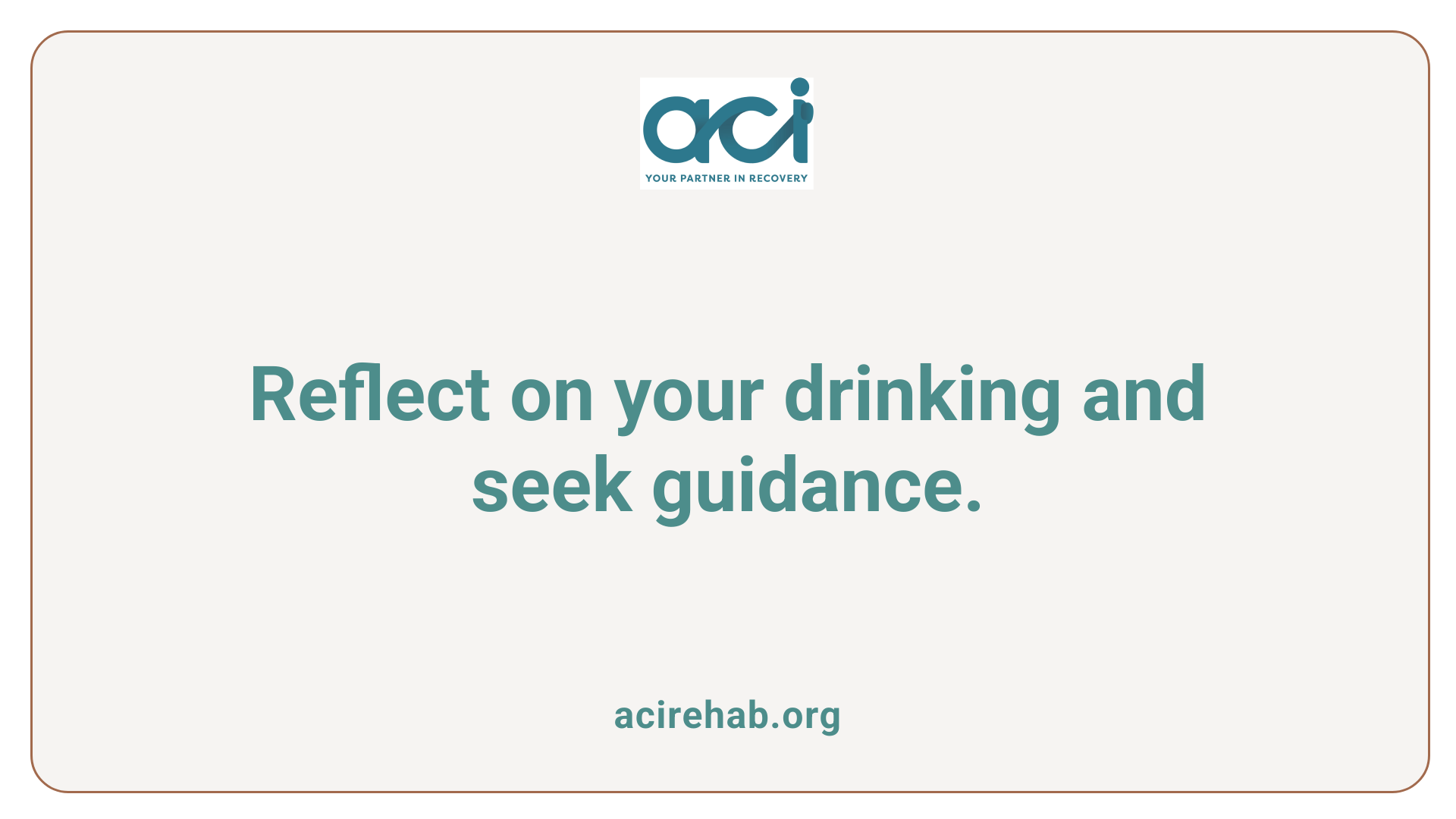
Importance of Self-Assessment
Experiencing one or more alcohol-induced blackouts can serve as a critical reminder for individuals to evaluate their drinking habits. Since blackouts indicate gaps in memory caused by excessive alcohol consumption, they can highlight problematic patterns in one’s relationship with alcohol. The necessity of self-reflection cannot be overstated; individuals should consider how often they drink, the contexts in which they drink, and whether such behavior leads to adverse outcomes.
When to Seek Help
If blackouts become frequent or if drinking leads to negative consequences such as impaired judgment or risky behaviors, professional help should be sought. Engaging with healthcare providers can provide valuable insights into drinking patterns and highlight the need for interventions before more severe alcohol use disorders develop. Resources are available for those ready to take the steps towards a healthier relationship with alcohol.
Conclusion
While experiencing a blackout may not conclusively indicate alcoholism, it is a strong signal to evaluate one’s drinking habits and consider the risks involved with heavy or frequent alcohol consumption. Understanding the physiological aspects and potential dangers of blackouts encourages responsible drinking, highlights the necessity for personal reflection, and underscores when professional advice might be needed. As awareness spreads, individuals can make informed decisions about their consumption behaviors, potentially reducing the prevalence of blackouts and their associated consequences.
References
- Interrupted Memories: Alcohol-Induced Blackouts
- Are Alcohol-Induced Blackouts a Sign of Alcoholism?
- Blackout Drunk: Signs, Causes, and Dangers of Blackout Drinking
- What Happened? Alcohol, Memory Blackouts, and the Brain – PMC
- Are Blackouts a Sign of Alcoholism? – Twin Lakes Recovery Center
- Blacking Out: The Dangers and Causes – Alcohol Help
- Drunk vs. Alcoholic: Signs It’s Time to Quit Drinking | Rehab CO

